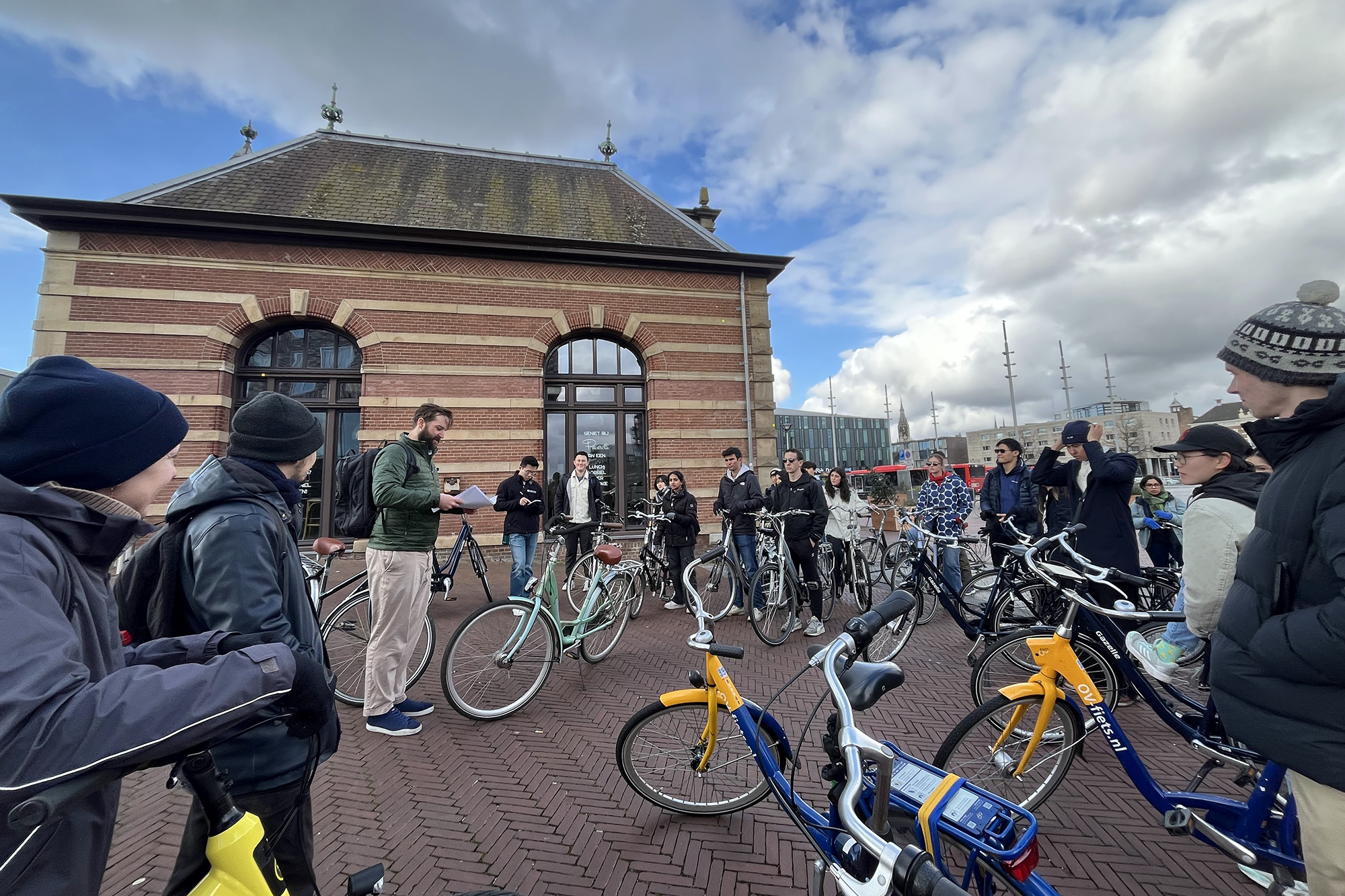They say you never forget how to ride a bike.
Dustyn Roberts hopes that her students never forget how a bike—something everyone has either seen or ridden—is the ideal introduction to engineering concepts like materials, urban design, and stability.
Instead of examining something more intimidating or imposing—say, jet engines—“I can bring a bike into class and we can talk about mechanical advantage and then ride up a hill,” says Roberts, a practice associate professor of mechanical engineering and applied mechanics in the School of Engineering and Applied Science.
With bicycles at the center, she created a Penn Global Seminar, Bicycles: The Mechanical Advantage, which aims to impart engineering skills as well as offer practical experience in bicycle design and maintenance.
The class also tackles the human side of cycling, including transportation policy. This semester, a guest speaker from Philadelphia’s Office of Transportation and Infrastructure Systems discussed traffic measurement and intersection design.
Requirements: Physics and bike know-how
It’s a consistently popular class, with 63 applications for 22 spots this year. Students taking the class have spanned the gamut of majors, including cognitive science, architecture, biology, political science and computer science. The only restrictions are that they must have taken physics and know how to ride a bicycle. “We had students that have biked across Europe, biked across different states in the U.S., folks who have been bike racers, who have worked in bike shops,” says Roberts.
Max Huang, a second-year physics and chemical engineering major in the Vagelos Integrated Program in Energy Research, says he was drawn to the course by the combination of hands-on mechanical experience and study of how bicycles are used in the world. “It seemed like such a fascinating way to integrate engineering principles into seeing how they applied to society,” he says.
The spring break travel experience to the Netherlands—the No. 1 cycling country in the world, with 17 million people and 22.8 million bikes—was a focal point for many students.
They learned that in the 1970s, Dutch society was as car-reliant as the United States, but began slowly implementing policy and infrastructure changes that led to increased bicycle adoption, says Huang, who is from Montreal.

